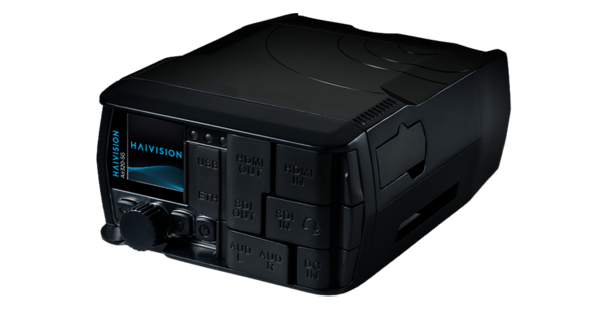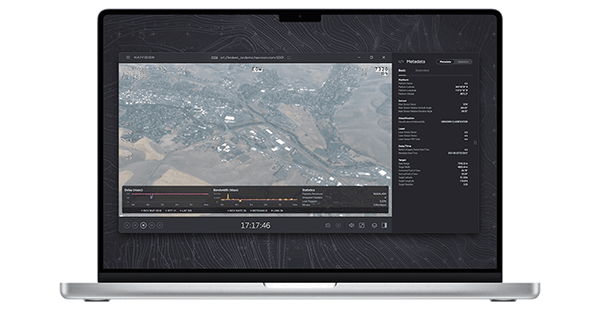Western Sydney University has been leveraging Haivision’s video streaming technology to create something new in the world of the law – to develop the technological infrastructure for a virtual court. This is a fascinating development with the potential to change many of the ways in which the courts of the future work. But, as with many interesting new developments in technology, there is often the question of “so what?” The use of bi-directional, low-latency video streams are clearly helping in this particular case, but how would this be relevant outside of a court?
There is sometimes a disconnect between the way technology is developed, how it is first adopted, and how it creates real change on a larger scale. In this blog post, we would like to bridge that gap. We will explain how the team at Western Sydney University has used low-latency bi-directional video encoding technology, and the results they have seen. We will then explore the further implications and possible applications of this technology, and how broadcasters and enterprises can leverage this use case to improve their own video streaming workflows.
Developing a virtual courtroom
Western Sydney University wanted to create a virtual courtroom to use as a proof of concept for a pilot program. This demonstration would start as a “moot court” involving professors, students, and members of the legal community. If it was successful, it could evolve into a project to be used in real legal proceedings. This wouldn’t simply be a question of just rolling in a monitor, and having participants listen to someone from a distance. They wanted to keep the real “in-person” feeling, without the need for physical presence.
There are two principle fashions of setting this up. There is what is known as a distributed courtroom, in which some participants are in an actual courtroom, with other participants joining through monitors and cameras set up where they would otherwise be seated. There is also an entirely virtual courtroom, in which participants are not in a courtroom, but in a “pod” – a room in front of monitors and cameras.
In both cases, each monitor has a camera affixed to it. This enables participants to make eye contact with whom they’re addressing. In the pilot program for the virtual courtroom, organizers at Western Sydney University were using 12 input and 12 output channels – this ensured that each participant was able to make eye contact with the others. Each of the four participants would be looking at three monitors with cameras, each camera sending a unique feed to a corresponding monitor.
Watch the proof of concept video to see how this looks in practice:
Of course, for this to be effective moving forward, participants will need to be connected from greater distances, which brings in a number of other challenges. Latency must be kept as low as possible while maintaining high picture quality – participants are able to read subtle facial cues, and better perceive the expressions from other participants, even when they’re thousands of miles away. With these subtleties cared for, the courtroom experience becomes far more real for the participants, and mimics the experience of a traditional courtroom setting.
Spreading success
This pilot program was considered quite successful. Subjectively, participants were given the opportunity to rate their experience, and overall, those acting as litigants, who were in front of the pods they entire time, rated that it was the same as, or more comfortable than, being in a traditional courtroom.
From a justice perspective, this pilot program addresses a number of issues. Among these are accessibility, safety, and quality of judgements. In particular, for cases in more remote regions, or for preliminary hearings, where participants are only needed for short periods of time, these remote courtrooms help to eliminate travel burdens.
As a result, there are other regions that are showing an interest in the project, including universities in North America like Université de Montréal, who are pioneering a project titled “Autonomy Through Cyberjustice Technologies.” Court districts in Europe are also developing their own projects. There is a real possibility that within the next 10 years, we will be seeing more occurrences of the virtual courtroom.
And it’s not just the court proceedings themselves that are changing with the evolution of video. The American state of New Jersey has a program, which it refers to as a “virtual courtroom,” although it is not quite the same as what is being developed. In this case, the public has the opportunity to watch certain preliminary hearings on weekends and holidays online. This is especially important for those who may be related to the case, but are not involved before the trial, such as victims and their families. It even extends beyond the courtroom – in the Australian state of Victoria, you can now use a video link to contact an appropriate representative (such as a regional magistrate,) for issues such as domestic violence.
As with any other technological transformations, this has implications far beyond the world of justice and education. There are a few lessons from this pilot project that expand beyond the classroom and courtroom.
Lessons for broadcasters
For important interviews and panels, guests can be in different locations than the host or the studio. In these cases, it can be challenging for both the host and the panelists when there are “gaps” in the conversation, caused by the delay in satellite feeds. However, as shown by the example of the virtual courtroom, technology has advanced dramatically with bi-directional live video streaming, and these gaps are no longer a necessary “surrender” to having remote interviews.
With low-latency video encoding technology, broadcasters can create workflows that enable natural interactions without awkward pauses, allowing panelists to fully interact not only with the moderator, but with other guests. This allows for more interactive, in-depth conversations, that are not only easier to watch, but can help to bring better ideas and more interesting content. You’re getting that human interaction that you would get in-person, without any delays.
Considering that this technology can be used anywhere, thanks to its use of public internet connections, broadcasters will have an easier time setting up interviews with experts.. And, you won’t need to worry about investing in the cost of an expensive, complex studio in different cities, or provisioning a satellite feed.
Move beyond fire hazards with enterprise streaming
Last year, the same Haivision video streaming technology was used at Microsoft Inspire to bring keynote speeches to overflow rooms. This was a fantastic option, as it allowed far more people to watch these speeches live, but it was not without its limitations. There is definitely a difference between watching these speeches and being able to participate as part of the audience.
However, with bidirectional video, we can bridge that gap. With low latency bidirectional videos, the audience, even in overflow rooms, can participate in the event. Audience members can give live feedback to the speaker, and ask questions in real-time. This also gives the speaker on stage the ability to “read their audience” even if they are not in the same room.
Start Changing Your Video Streaming Story
You might not be looking to set up your own virtual courtroom, but as you have seen above, the technology that is enabling these advances in justice is creating new opportunities for businesses and broadcasters.
Start exploring what possibilities are open for you. The Definitive Guide to Haivision Encoder and Decoder Technology and Hardware is the ideal place to start your journey with video streaming. It provides an overview of the different options available to you, as well as how different organizations, like LinkedIn and BMW, are already leveraging video streaming.


























